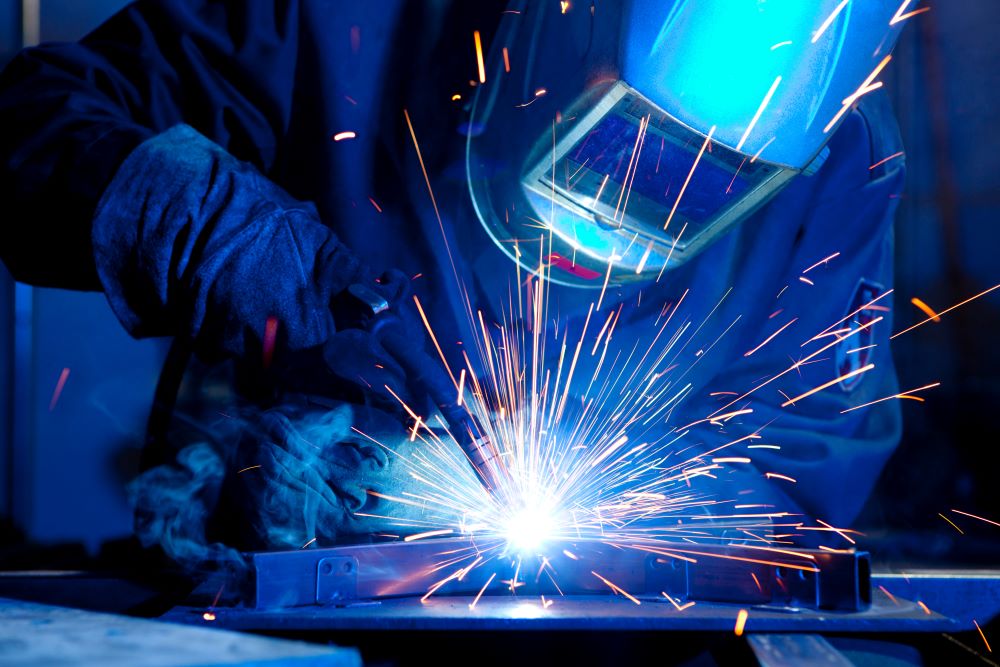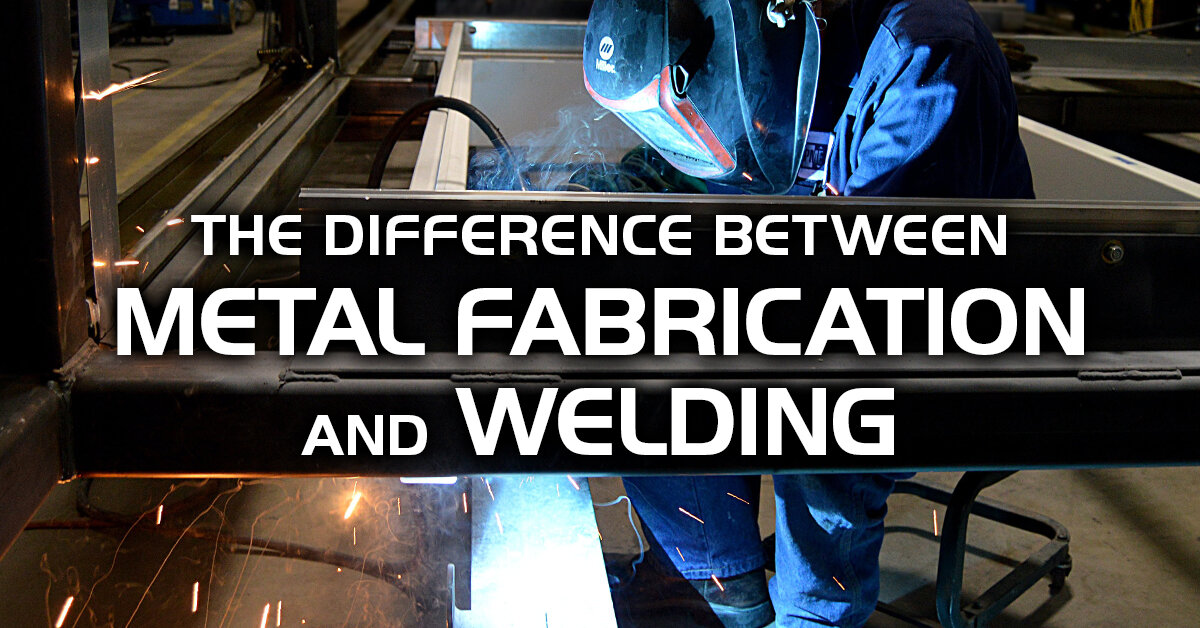Common Welding Repair Issues and Exactly How to Address Them Properly
Welding repair work usually come across a range of problems that can endanger the stability of the end product. Common troubles consist of poor infiltration, porosity, and imbalance, to name a few. Each flaw provides distinct difficulties that call for details approaches for resolution. Recognizing these issues is crucial for welders intending to boost their outcomes and abilities. This discussion will certainly discover these common welding repair service problems and efficient techniques to address them.
Inadequate Infiltration
Insufficient penetration takes place when the weld metal fails to totally fuse with the base product, causing weak joints and prospective architectural failures. This problem usually originates from insufficient warmth input, inaccurate electrode angle, or incorrect welding speed. Welders might encounter poor penetration because of a miscalculation of the necessary parameters for a details product thickness or kind. Furthermore, contamination on the base product's surface can impede efficient bonding, intensifying the trouble. To attend to inadequate penetration, welders should ensure appropriate setups on their devices and maintain a tidy work surface. Regular inspection of welds is advised to determine any shortages early, enabling timely corrections and the prevention of endangered structural honesty in welded assemblies.
Porosity
Porosity is a common issue in welded joints that shows up as tiny gas bubbles caught within the weld steel. This defect can compromise the integrity of the weld, bring about decreased toughness and possible failure under stress and anxiety. Montana Mobile Welding and Repair Belgrade Fabrication. Porosity normally emerges from contamination, moisture, or incorrect welding methods, which allow gases to escape right into the liquified weld swimming pool. To deal with porosity, welders must ensure correct surface area prep work, maintain a tidy workplace, and make use of ideal welding parameters. In addition, choosing the right filler product and securing gas can alleviate gas entrapment. Regular evaluation and screening of welds can aid recognize porosity early, assuring prompt restorative activities are taken, consequently protecting the top quality and integrity of the bonded framework
Imbalance
Imbalance in welding can occur from different elements, including inappropriate arrangement and thermal development. Recognizing the source is essential for effective resolution. Several adjustment techniques are readily available to straighten parts and assure structural honesty.
Root causes of Imbalance
Welding misalignment frequently comes from a range of underlying problems that can endanger structural honesty. One primary cause is improper fit-up of parts prior to welding, which can cause voids and uneven surface areas. Variations in thermal growth throughout the welding process can likewise cause distortion, particularly if the products being joined have various coefficients of development. Furthermore, inadequate securing and fixturing might fail to hold parts firmly in location, bring about motion during welding. Inadequately kept equipment, consisting of welding makers and tools, might present inconsistencies in the weld bead, additional adding to misalignment. Lastly, driver error, coming from insufficient training or experience, can likewise play a considerable duty in producing misaligned welds.
Adjustment Techniques Available
Dealing with misalignment effectively requires a combination of corrective methods tailored to the particular problems at hand. One typical method is the use of components or jigs to hold components in the right placement throughout welding, guaranteeing consistent alignment. Additionally, preheating the products can aid reduce distortion and boost fit-up. For substantial imbalance, mechanical realignment techniques, such as making use of hydraulic jacks or clamps, can be used to deal with the placement before welding. Post-weld heat treatment might likewise be required to ease anxieties triggered by misalignment. Cautious assessment and modification throughout the setup stage can prevent imbalance issues from becoming substantial issues, advertising a smoother welding procedure and improving total architectural integrity.
Distortion
Distortion is a typical difficulty in welding that can emerge from various variables, including uneven cooling and heating. Comprehending the sources of distortion is crucial for implementing efficient avoidance strategies. Resolving this issue not just improves architectural integrity but additionally boosts the overall high quality of the weld.
Reasons for Distortion
When based on the extreme warmth of welding, products often go through modifications that can lead to distortion. This phenomenon mainly arises from thermal expansion and contraction throughout the welding process. As the weld area warms up, the product expands; upon air conditioning, it gets, which can develop internal anxieties. In enhancement, uneven home heating throughout a workpiece can intensify these anxieties, causing bending or bending. The kind of material also plays a considerable role; steels with differing thermal conductivity and coefficients of development may react in different ways, bring about unforeseeable distortions. Inadequate joint design and inadequate fixturing can add to imbalance during welding, increasing the likelihood of distortion. Recognizing these causes is essential for reliable welding repair and avoidance approaches.
Prevention Techniques
Effective avoidance techniques for distortion throughout welding emphasis on regulating warmth input and making certain appropriate joint design. Keeping a constant warmth input helps to decrease thermal development and contraction, which can cause distortion. Utilizing strategies such as preheating the workpiece can also minimize the temperature level gradient, advertising consistent home heating. Furthermore, selecting proper joint designs, such as T-joints or lap joints, can enhance security and lower stress and anxiety focus. Carrying out proper fixturing to protect the work surfaces in location further help in keeping alignment during the welding procedure. Staggered welding series can distribute warmth more equally, stopping local distortion. By using these approaches, welders can considerably decrease the chance of distortion and improve the total quality of their welds.
Breaking
Splitting is an usual issue run into in welding repair work, frequently arising from different factors such as inappropriate cooling prices, product choice, or inadequate joint preparation. The incident of cracks can greatly endanger the stability of the weld, bring about potential failures throughout operation. To resolve this issue, welders must initially evaluate the root creates, guaranteeing that materials are suitable and properly picked for the details application. Furthermore, managing the air conditioning price throughout the welding procedure is crucial; quick air conditioning can induce stress and result in cracking. Appropriate joint layout and prep work also add to reducing the threat. Carrying out these strategies can enhance weld quality and resilience, inevitably click here for more lowering the possibility of cracking in completed weldments.

Incomplete Blend
A significant problem in welding fixings is insufficient combination, which happens when the weld metal does not properly bond with the base material or previous weld passes - Montana Mobile Welding and Repair Welding. This problem can lead to weak points in the joint, possibly jeopardizing the honesty of the bonded structure. Elements adding to incomplete combination include inadequate warm input, inappropriate welding method, and contamination of the surface areas being signed up with. To address this problem properly, welders ought to guarantee proper pre-weld cleansing and surface preparation, along with readjust their welding criteria to achieve appropriate infiltration and blend. Routine evaluation during the welding procedure can likewise help recognize insufficient fusion early, permitting timely corrective steps to boost the general quality of the weld
Overheating
While welding fixings can boost structural integrity, overheating offers a considerable obstacle that can cause product degradation. Too much warm during welding can alter the mechanical properties of metals, leading to decreased strength, enhanced brittleness, and bending. This sensation is especially critical in high-stress applications where structural dependability is extremely important. Recognizing overheating can include visual examinations for staining or distortion, in addition to keeping track of temperature throughout the welding procedure. To mitigate the risks related to getting too hot, welders need to employ ideal techniques, such as controlling warmth input, adjusting travel rate, and making use of suitable filler materials. Additionally, carrying out pre- and post-weld warmth treatments can help recover product residential or commercial properties and improve the total top quality of the repair work, guaranteeing long-term efficiency and safety and security.
Frequently Asked Questions
What Are the Usual Signs of a Welding Defect?

Exactly How Can I Examine My Welds for Top quality?
To examine welds for top quality, one can make use of aesthetic assessments, ultrasonic screening, and radiographic techniques. Each technique guarantees structural integrity, determines flaws, and verifies adherence to specified requirements, ultimately enhancing the dependability of the bonded joints.
What Safety and security Preventative Measures Should I Take While Welding?
When welding, one must prioritize safety by using suitable personal safety tools, making certain appropriate ventilation, safeguarding flammable products away, keeping a clean work space, and being mindful of environments to avoid read more injuries and crashes.
Can I Fix a Weld Without Renovating the Entire Joint?
Fixing a weld without remodeling the whole joint is feasible, depending on the damages (Belgrade Fabrication). Methods such as grinding, including filler material, or utilizing a welding process can properly resolve certain flaws while maintaining the surrounding framework
What Tools Are Vital for Reliable Welding Fixes?
Important tools for reliable welding repair work include a welding device, wire brush, mill, protective equipment, clamps, and filler products. Each tool plays an important role in making certain quality and safety during the repair work procedure. Porosity usually emerges from contamination, wetness, or improper welding techniques, which enable gases to get away right into the molten weld pool. Badly kept tools, consisting of welding equipments and tools, may introduce variances in the weld grain, more adding to imbalance. When subjected to the extreme warmth of welding, materials usually undergo adjustments that can lead to distortion. Fracturing is a typical issue come across in welding repair services, often resulting from numerous elements such as inappropriate air ewm welding conditioning prices, product selection, or inadequate joint prep work. A significant concern in welding repair services is insufficient blend, which takes place when the weld steel does not appropriately bond with the base product or previous weld passes.